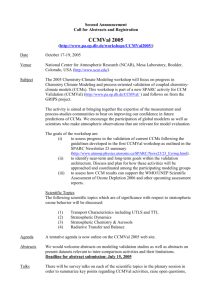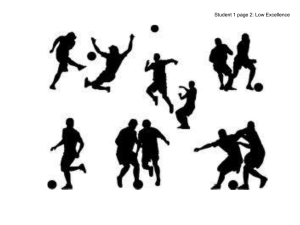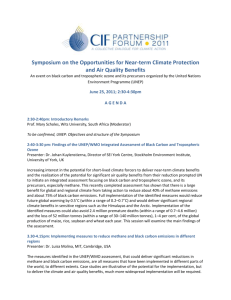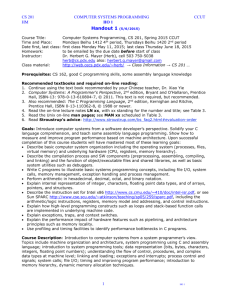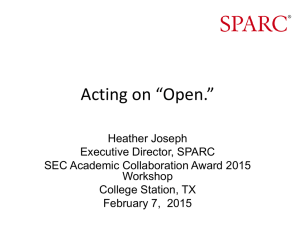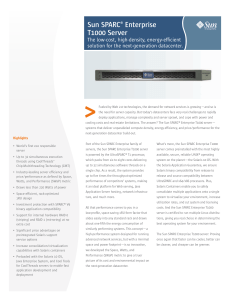CCMVal Status and Overview
advertisement
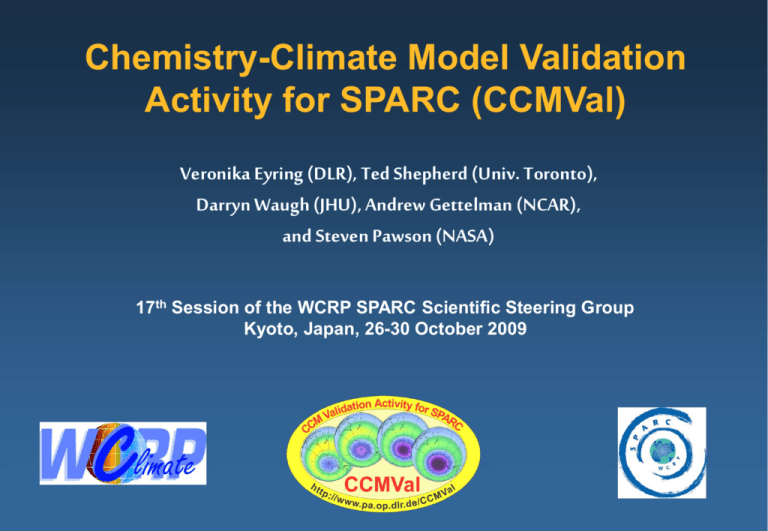
Chemistry-Climate Model Validation
Activity for SPARC (CCMVal)
Veronika Eyring (DLR), Ted Shepherd (Univ. Toronto),
Darryn Waugh (JHU), Andrew Gettelman (NCAR),
and Steven Pawson (NASA)
17th Session of the WCRP SPARC Scientific Steering Group
Kyoto, Japan, 26-30 October 2009
Chemistry-Climate
Model Validation
Activity (CCMVal)
GOAL: Improve
understanding of CCMs
through process-oriented
evaluation and provide
reliable projections of
stratospheric ozone and
its impact on climate
Motivation
CCMVal-1 simulations
CCMVal approach to CCM Evaluation and analysis
Process-oriented
CCM evaluation
CCMVal Evaluation Table
Eyring et al., BAMS, 2005
History
1st CCMVal workshop, Grainau, Germany, 2003:
Core processes and a set of standard diagnostics defined.
2nd CCMVal workshop, NCAR, USA, 2005:
The set of standard diagnostics was further refined. Common
reference simulations and CCMVal-1 data requests agreed.
=> CCMVal-1 Simulations
Results used in support of 2006 WMO/UNEP Ozone Assessment
and IPCC AR4.
3rd CCMVal workshop, Leeds, UK, 2007:
Planning of CCMVal-2 and SPARC CCMVal Report.
Breakout Group I:
Breakout Group II:
Breakout Group III:
Breakout Group IV:
CCMVal-2 Simulations in support of WMO 2010 & IPCC AR5
CCMVal Diagnostic Tools, Data Archiving and Data Formats
Define a Strategy for Developing Standards for CCMVal Performance
SPARC CCMVal Report
4th CCMVal workshop, Toronto, Canada, 2009.
Planning of CCMVal-2 and SPARC CCMVal Report
CCMVal-1 (in support of WMO/UNEP 2007 and AR4)
13 CCMs participated in the first round of CCMVal (CCMVal-1).
Output collected in the central CCMVal database at the British Atmospheric
Data Centre (BADC).
Evaluation diagnostics obtained from various observational datasets.
Results have been used to support the 2006 WMO/UNEP Scientific
Assessment of Ozone Depletion and IPCC AR4.
Currently around 60 CCMVal Collaborators working with CCMVal output
Several CCMVal-1 papers published,
submitted or in preparation.
Multi-model evaluation focusing mainly on
transport & dynamics has been performed
(e.g. large differences in inorganic chlorine).
Demonstrated the advantage of a
multi-model evaluation strategy.
SPARC CCMVal Report: Rationale
In the past there has been insufficient time to evaluate CCM performance
thoroughly while preparing the Ozone Assessments.
The goal of the SPARC CCMVal report is to
(A) provide useful and timely information for the WMO/UNEP 2010 and IPCC AR5.
(B) provide an up-to-date evaluation of the ability of CCMs to represent the
stratospheric ozone layer, stratospheric climate and climate variability, and the
coupled ozone-climate response to natural and anthropogenic forcings.
This comprehensive evaluation and analysis
improves our understanding of the strengths and weaknesses of CCMs and thus
increases their integrity and credibility.
improves our understanding of the causes of past ozone changes.
allows a reassessment of the projections of ozone and UV radiation through
the 21st century.
leads to a more detailed understanding of the impact of stratospheric changes
on tropospheric climate.
SPARC CCMVal Report on Evaluation of CCMs
Timeline
February 2007
15 September 2007
Lead authors established
Chapter outlines finalized
15 July 2008
Updates on chapters (Zeroth Order Draft)
31 August 2008
Lead Author meeting coupled to SPARC GA (Bologna, Italy)
30 April 2009
First Order Draft for internal review
20 May 2009
Comments back
1-5 June 2009
CCMVal 2009 Meeting, University of Toronto, Canada
1 August 2009
Second Order Drafts from all chapters sent to Steering
Committee
15 September 2009
Second Order Draft sent to external / internal review
15 October 2009
Reviewer comments back
9-11 Nov 2009
Final review Meeting (Toledo, Spain)
15 December 2009
Report revised
Jan-Mar 2010
Report published
SPARC CCMVal Report on Evaluation of CCMs
18 CCMs participate in CCMVal-2
Structure and Authors (around 100 authors are analyzing the CCMVal-2 data):
Executive Summary {Eyring, Shepherd, Waugh plus chapter Lead Authors,
finalized at the Review Meeting in Toledo, Spain, Nov 2009}
Chapter 1: Introduction {Eyring, Shepherd, Waugh}
Part A: Chapter 2: Chemistry Climate Models and Scenarios {Giorgetta, Shibata}
Part B: Process evaluation
Chapter 3: Radiation {Fomichev, Forster}
Chapter 4: Dynamics {Butchart, Charlton}
Chapter 5: Transport {Neu, Strahan}
Chapter 6: Chemistry and microphysics {Chipperfield, Kinnison}
Chapter 7: UTLS {Gettelman, Hegglin}
Part C: Chemistry-Climate Coupling
Chapter 8: Natural Variability {Manzini, Matthes}
Chapter 9: Long-term Projection of Stratospheric Ozone {Austin, Scinocca}
Chapter 10: Effect of the Stratosphere on Climate {Baldwin, Gillett}
Discussion items for the SPARC SSG
SPARC CCMVal Report
Length SOD: 500-600 pages
Number of figures SOD: around 100-150; most color
Special JGR Issue on (submission 1 October - 30 November 2009) to be ready
in time for citation in WMO 2010
Formats
Publication
Distribution
• Executive Summary will be published in the SPARC Newsletter
• Announcements (e.g. on SPARC and WCRP website)
• Distribution per mail?
Appendix and/or Online Supplements
Beyond the CCMVal SPARC Report:
Further analysis on sensitivity simulations planned for WMO 2010
Encourage a SPARC Data Initiative (contact and information point)
Collaboration with tropospheric & Earth System modelers (AC&C, C4MIP, CMIP)
